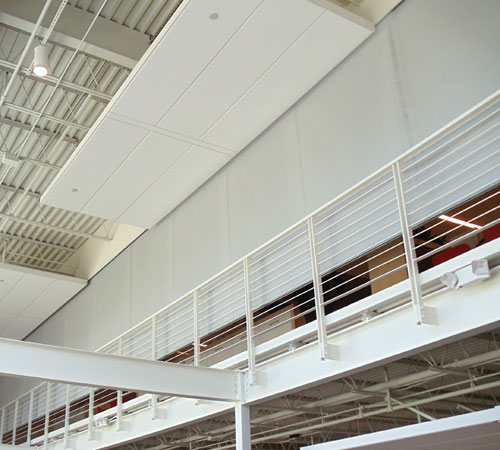Fire and Smoke Curtains: Meeting Atrium Code Requirements
Learning Objectives:
- Discuss fire and smoke code requirements for atrium designs, interior stairs and escalators.
- Describe the sustainable features of fire- and smoke-rated curtains.
- Explain how fire and smoke curtains can be used to supplement or replace smoke evacuation systems in ways that save energy and reduce mechanical system costs.
- Summarize the ways fire and smoke curtains may be specified so they enhance daylighting by supporting atrium design.
Credits:
Originally an open central court in ancient Rome, the modern atrium dates back to Victorian times when advances in manufacturing techniques enabled courtyards to be covered in glazing. Nowadays, the atrium is a design feature that gives multiple building types architectural distinction.
By expanding the amount of natural light within a building, atrium designs also contribute significantly to sustainable design. Daylighting strategies reduce operating costs and have been documented to deliver energy savings through improved life cycle costs and reduced emissions. Moreover, daylight vitalizes interior spaces and has been shown to increase user satisfaction and visual comfort leading to improved performance.
Since the 1980 MGM Grand fire in Las Vegas, with its multiple deaths on upper floors due to smoke inhalation, life safety fire and smoke code regulations have become increasingly stringent and are now one of the most critical atrium design issues. Unlike other building configurations whose code requirements focus on structural fire-resistant floors, walls and glazing, atrium building codes require more complex systems that are activated in the event of fire. Automatic sprinklers, smoke exhaust systems and even rolling steel doors have all been employed in keeping people in atrium designs safe in the event of fire.
Yet architects and their clients, driven by the growing green demand for open office floors, and eager for new structures with larger, soaring open spaces, have found that they are constrained in terms of both design and cost by familiar and conventional solutions and have often been forced to reject atrium designs. Similarly, architects planning to incorporate or add an atrium to an existing structure have learned that such solutions can add a significant amount to construction budgets.
 |
Shown here, vertical flexible smoke-rated curtain used to compartmentalize upper floor of atrium space in a fire event. Deployment of curtain systems can eliminate the need for costly mechanical smoke evacuation and increase usable building space. Photo courtesy of Smoke Guard, Inc. |









